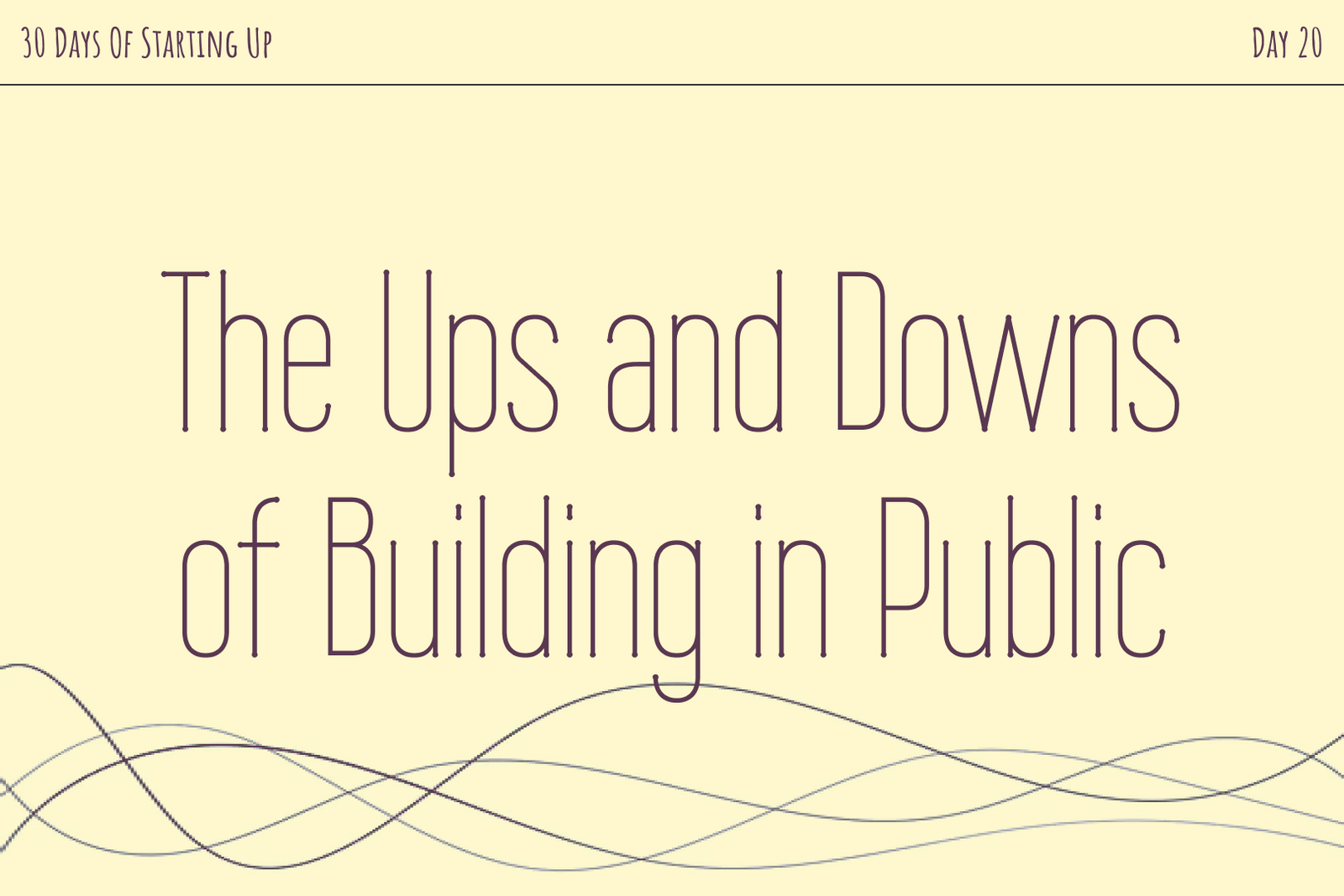The Ups and Downs of Building in Public

Today is my 20th-day building my startup in public through this newsletter series. Over this condensed timeframe that I practiced the “build-in-public” concept, I grew new understandings of its whys and hows.
Build-in-public, in its essence, is creating a new relationship between founder and audience. In the traditional way of running a startup, the founder-audience relationship doesn’t start until the product launches. Build-in-public helps the relationship happen earlier during the development phase. It provides more room for the relationship to grow, engage and create value.
In healthy relationships, everyone both gives and receives.
Founders receive:
early product feedback
engagement and support
be held accountable, momentum
Founders should not take these three gifts for granted. Most build-in-public newsletters are free but don’t adopt that “free” mindset. Readers are paying attention and time, which are the most valuable. I feel grateful to have a growing group of people who checked out my progress daily. They propel me to show up the next day because “if I don’t, someone will notice.” It is healthy accountability to have.
Founders should give:
Summarized learnings from successful and failed experiments
Insight into product design, development, and marketing
Transparent stats that can benefit others
In my opinion, the build-in-public experiments would only succeed if founders can also create values for their audiences in return. If it is just a work log, it may not work that well. Founders should put into thoughts how to make it worthwhile for the audience’s time. I am still exploring how to create meaningful content for you. Let me know what you want to see in the future.
In the past 20 issues of the newsletter, there are a few issues I struggled to write. There are two scenarios when that happens:
I went into an extended flow state. It would be 11:30 pm when I wrapped up work, and I still had a newsletter to write. Yesterday, when I posted Typeface Finder App Demo at 3 am, was one of the cases.
I spent the day slacking off and had nothing to write about by the end of the day. Fighting Unproductiveness on Day 12 was one of the cases.
I would wish #1 happens more frequently, but truth be told, #2 is much more likely to occur in my case. I have accepted both versions of me, the flow state me and the slacking off me, and learned to tackle two different problems with an equal mind. Both were difficult, but both had payoffs:
In the #1 scenario, sticking to the plan and writing the newsletter, even at very late hours, helped me clear my head and the path forward. The writing exercise gave me the space to think about the bigger picture after being knee-deep in the nitty-gritty of craftmanship all day. On a side note, it also forced me to create marketable content such as screenshots or screencasts, which come in handy later.
In the #2 scenario, I was forced to write about any topic, even unproductiveness itself. It created a space for me to self-reflect and do a thought exercise. Even when it failed at every level, the ritual of delivering the newsletter gave me a feeling of accomplishment: even though I didn’t do anything that day, at least I wrote a newsletter. It is mental trickery that I needed to keep momentum instead of dwelling into an unproductive spiral. With a single accomplishment bagged that day, I can see tomorrow as a fresh start.
Don’t forget to write to me about what you would like to see in the following issues. Or let me know what drives you to subscribe in the beginning. Your advice and insights are very valuable to me. Thanks for tuning in, and have a wonderful weekend!
